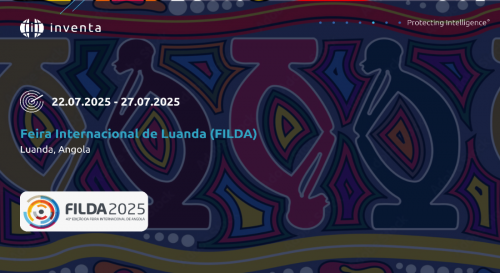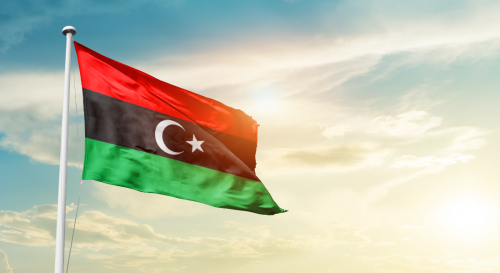
Is Western Sahara a no-go for trademark protection?
Western Sahara is an Atlantic-coastal desert area of 266,000km2, bordered by the Atlantic Ocean, Morocco, Algeria and Mauritania. A former Spanish colony, it has been on the the United Nations (UN) list of non-self-governing territories since 1965 along with 17 other territories.
‘Non-self-governing territories’ are defined as "territories whose people have not yet attained a full measure of self-government” according to Chapter XI of the UN Charter.
The reasons for a region to be declared a non-self-governing vary and are specific to each territory. In the case of Western Sahara, this is mainly due to the fact that it is a disputed territory between the Saharawi people, led by the Polisario Front, which self-proclaimed it the Sahrawi Arab Democratic Republic (SADR) in 1976, and Morocco, which annexed two-thirds of the country in 1975 after the withdrawal of Spain.
Many governments recognise the SADR and it is a full member of the African Union. However, Morocco sees Western Sahara as part of its historic territory and continues to claim control of the region. This contradiction of positions resulted in an armed conflict, which ceased after UN intervention in the 2000s. At that moment, Morocco agreed to hold a referendum on Western Saharan independence, but this is yet to take place. As a result, the legal status of the territory and the question of its sovereignty remain unresolved.
Registering a trademark in Western Sahara
In terms of trademarks in an international framework, the SADR is not a member of the Word Trade Organisation and, consequently, is not a signatory member of the Agreement on Trade-Related Aspects of Intellectual Property Rights. In fact, it is not a member of any IP-related international agreement. However, because it is a non-self-governing territory, it has an international code (ES), which is accepted for use in indicating states, other entities and intergovernmental organisations when applying for international applications at WIPO. Thus, even if it is unlikely that this code is used, in the eventuality that it is, what are its legal effects?
At a local level, the SADR has no IP legislation, IP office or publications of cautionary notices. There is therefore no trademark protection in the SADR. Nevertheless, since the territory is largely occupied by Morocco, which considers itself to have legitimate control of the region, any trademark rights protected in Morocco are arguably also protected in all regions over which the country claims jurisdiction. However, since the Western Sahara is a non-self-governing territory, the legitimacy of these rights is a legal conundrum when it comes to international commercial agreements (eg, when licensing a Moroccan trademark to an international company). Indeed, can this licence be considered effective in Western Sahara by courts other than Moroccan courts?
"At a local level, the SADR has no IP legislation, IP office or publications of cautionary notices."
Naturally, the Polisario Front would defend that Western Sahara can be designated when applying for international rights at WIPO, while Morocco would contest this. On the other hand, Morocco would affirm that a Moroccan IP right must be considered effective in Western Sahara by any national court in the world.
However, no legal response to this dilemma exists. As the jurisdiction of Morocco in the region is at stake as far as IP rights are concerned, we can expect that cases related to the 2000 and 2010 EU-Morocco Trade Agreements would help to highlight a response or at least some guidance. These agreements are related to agricultural and fish products. In practice, Morocco began to export agricultural products grown in Sahrawi land and fish caught in Sahrawi waters to the European Union. However, these commercial acts were denounced by a non-governmental organisation – Western Sahara Campaign UK – which challenged the applicability of the 2000 agreement in Western Sahara before the UK courts, and by the Front Polisario, which defended the non-applicability of the 2010 agreement to Western Sahara before the European courts. Both legal actions were based on the principles of international law, including the rights of the Sahrawi people to self-determination and permanent sovereignty over their natural resources.
The UK and European courts decided equally for the non-applicability of the referred trade agreements based on international customs and treaties – namely, on the principles of interpretation under Article 31 of the Vienna Convention on the Law of Treaties and the customary principle of self-determination. The courts considered that, in light of those principles, the “territory of the Kingdom of Morocco” cannot be interpreted as including Western Sahara.
These decisions do not provide a response regarding the legality of Western Sahara, as this would be beyond the courts’ power. However, they do teach us that it would be foolhardy to consider that trademarks protected in Morocco would be automatically protected in Western Sahara without any other consideration of, for example, the impact of such rights on the local population.
Overall, Western Sahara is effectively a no man’s land for trademark protection. It is hoped that this will change in the future.
This is a co-published article, which was originally published in the World Trademark Review (WTR).
Lista de Territórios
Não existem resultados para a sua pesquisa.
- África
- África do Sul
- Angola
- Argélia
- Benin
- Botsuana
- Burkina Faso
- Burundi
- Cabo Verde
- Camarões
- Chade
- Comores
- Costa do Marfim
- Djibuti
- Egito
- Eritreia
- Eswatini (Suazilândia)
- Etiópia
- Gabão
- Gâmbia
- Gana
- Guiné
- Guiné-Bissau
- Guiné-Equatorial
- Lesoto
- Libéria
- Libia
- Madagáscar
- Maiote
- Malaui
- Máli
- Marrocos
- Maurícias
- Mauritânia
- Moçambique
- Namíbia
- Níger
- Nigéria
- Quénia
- República Centro-Africana
- República Democrática do Congo
- República do Congo
- Reunião
- Ruanda
- Saara Ocidental
- São Tomé e Principe
- Seicheles
- Senegal
- Serra Leoa
- Somália
- Sudão
- Sudão do Sul
- Tanzânia
- Togo
- Tunísia
- Uganda
- Zâmbia
- Zanzibar
- Zimbábue
- África (OAPI)
- África (ARIPO)
- Mais Territórios
- Macau
- Maldivas
- Portugal
- Timor Leste
- Marca da União Europeia (EUIPO)
- Marca Internacional (Sistema de Madrid)
- Patente Europeia (IEP)
- Tratado de Cooperação em matéria de Patentes (PCT)




